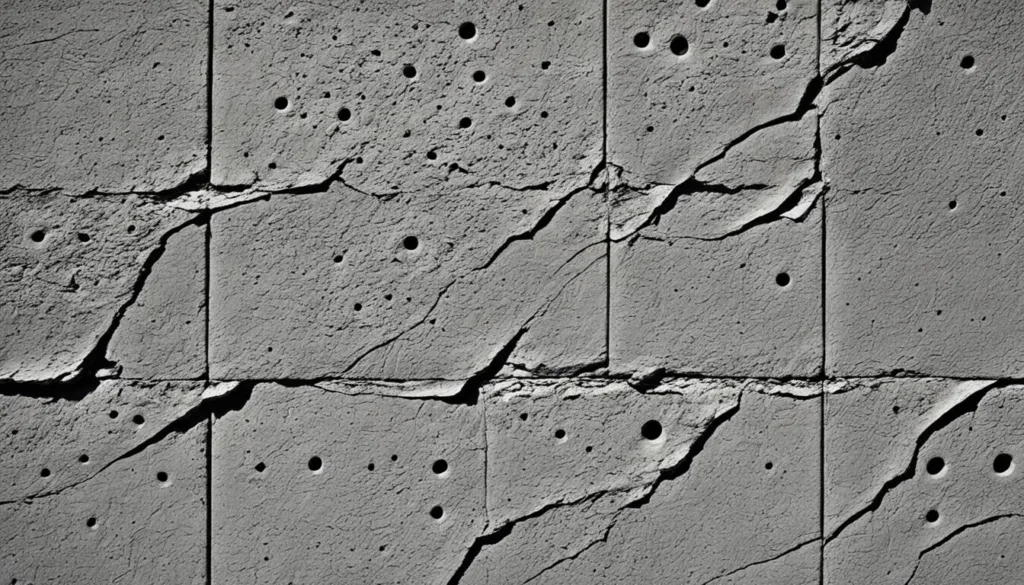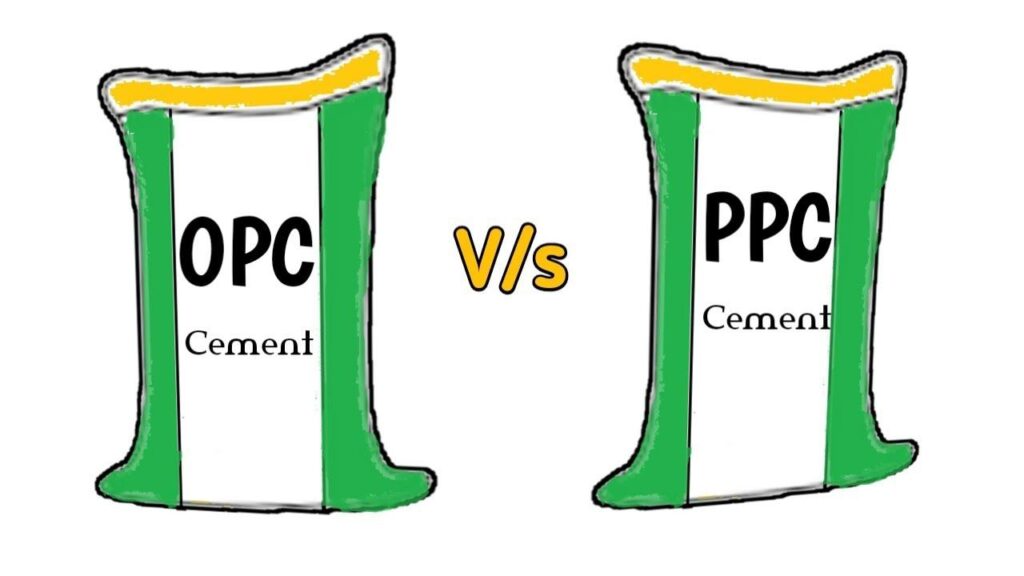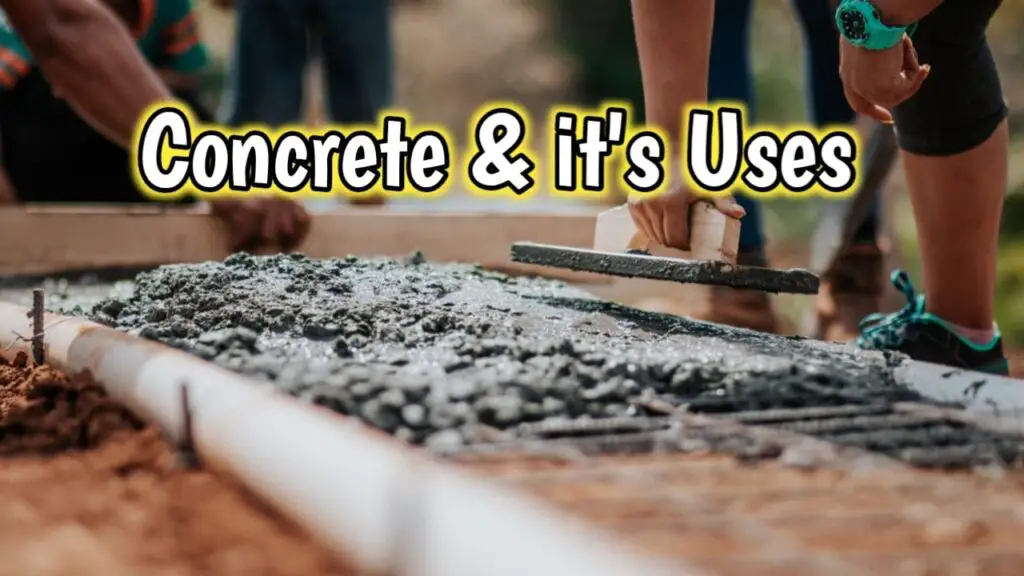The creep of concrete is a crucial characteristic to be taken into account in structural design, which can significantly impact the long-term durability and performance of concrete structures. Creep refers to the gradual deformation and flow of concrete over time under sustained loading. In this section, we will explore the concept of creep in concrete, the different factors that affect creep, and discuss their role in construction projects.
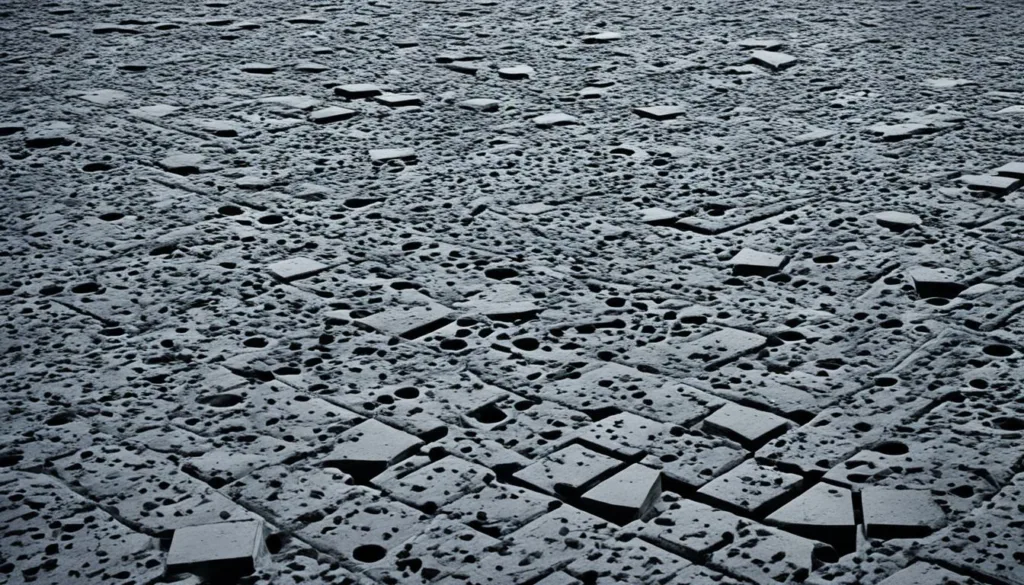


Key Takeaways
- Creep refers to the gradual deformation and flow of concrete under sustained loading over time;
- Age of loading and creep coefficient are significant factors in determining the creep of concrete;
- Water-cement ratio, humidity, age of concrete, aggregates, admixtures, and other relevant aspects can impact the creep behavior of concrete;
- Creep can have significant implications on the performance of concrete structures such as increased deflection, decreased load-carrying capacity, and potential long-term structural damage;
- Understanding the factors that impact creep in construction projects is vital for ensuring the long-term durability and performance of concrete structures.
Understanding Creep of Concrete
Creep is a commonly encountered phenomenon in the world of construction. It refers to the gradual deformation and flow of concrete over an extended period under a sustained load. Creep is a crucial consideration in structural design, as it has a significant impact on the long-term performance, durability, and, ultimately, safety of concrete structures. There are a few reasons for this.
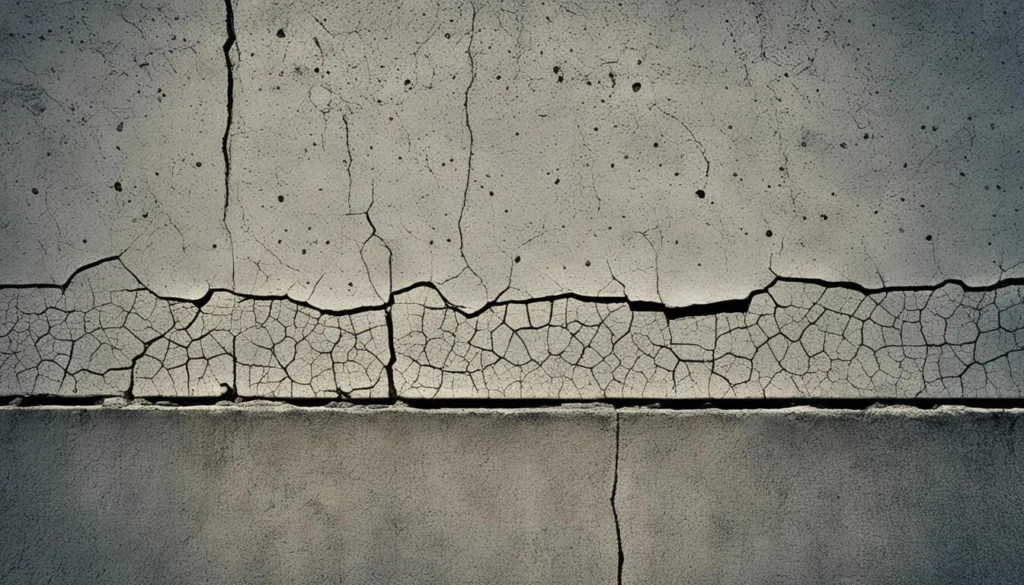

The gradual deformation of concrete can lead to increased deflection, which may compromise structural integrity, affecting load-carrying capacity and potentially resulting in long-term structural damage. Hence, continuing monitoring and maintenance of structures should take creep into account.
To minimize the risks induced by creep, it is crucial to understand the underlying causes and contributing factors. The next sections will explore these in detail, providing insights into the complex mechanics and characteristics of creep in concrete.
Creep Coefficient
The behavior of concrete creep is significantly affected by the age of loading and the creep coefficient. The age of loading refers to the time at which the sustained load is applied, while the creep coefficient is the ratio of creep strain to the elastic strain under a given load.
When a load is applied at an early age, the creep effect is more pronounced due to the increased moisture content and ongoing hydration processes in the concrete. The creep coefficient, on the other hand, is influenced by various factors such as the stress level, temperature, relative humidity, and type of load.
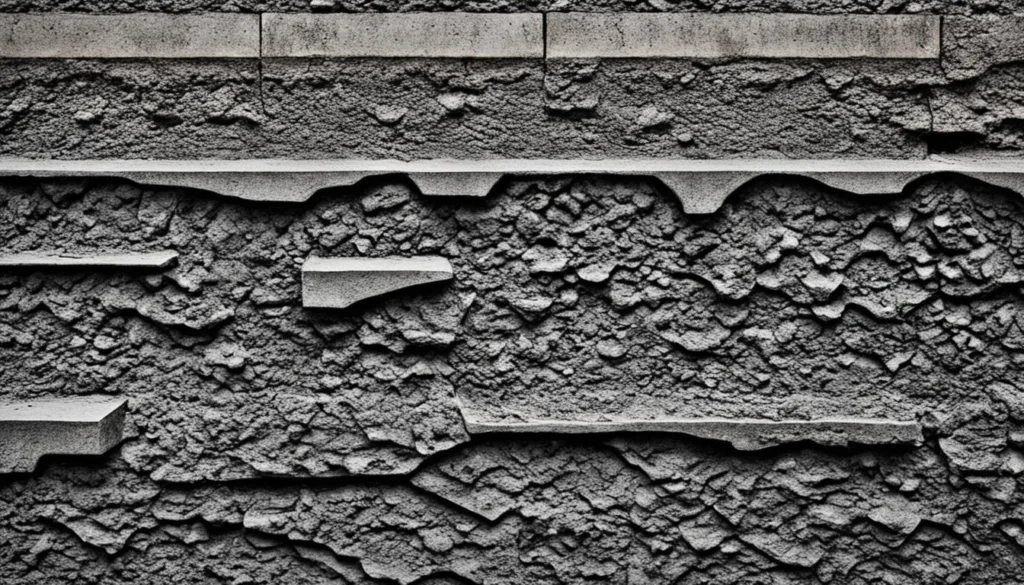

As the concrete ages, the effect of moisture and ongoing hydration processes on creep behavior decreases. Conversely, under higher stress levels or environmental conditions that result in increased moisture content, the creep coefficient may be more significant.
How to calculate the creep coefficient?
The creep coefficient is calculated by dividing the creep strain by the elastic strain at a specific load level over a defined period. It can be expressed as a percentage or decimal value, with the most common being the time-dependent coefficient, which measures creep strain at a given time relative to the strain under an initial loading.
Factors Affecting Creep of Concrete
Concrete creep is influenced by several factors that can significantly impact its long-term performance. Understanding these factors is important for designing and constructing durable concrete structures. Here are six key factors that affect the creep of concrete:
- Water-cement ratio: The water-cement ratio is a crucial factor that affects the creep of concrete. Higher water-cement ratios lead to increased creep since it results in more water available for chemical reactions and increased pore space within the concrete.


- Humidity: The humidity levels affect the drying process of concrete, which influences its creep behavior. Higher humidity levels slow down the drying process, resulting in reduced creep, while lower humidity levels accelerate drying and increase creep.
- Age of concrete: The age of concrete at the time of loading has a direct impact on its creep behavior. Younger concrete tends to exhibit higher creep due to its higher moisture content and ongoing hydration processes, while older concrete generally experiences lower creep.
- Aggregate: The type and characteristics of the aggregate used in concrete construction can influence its creep behavior. Aggregates with higher porosity or different thermal expansion coefficients can result in increased creep.
- Admixtures: The use of chemical admixtures in concrete can affect its creep behavior. Some admixtures, such as shrinkage-reducing admixtures, can reduce creep by minimizing shrinkage and cracking in the concrete.
- Environmental Exposure and Curing: Curing conditions and environmental exposure during and after the concrete placement can impact its creep behavior. External factors like temperature, humidity, and exposure to chemicals, as well as concrete mix design, can influence its creep behavior.
By considering these and other relevant factors affecting the creep of concrete, engineers can optimize the design of durable and long-lasting concrete structures.
Water-Cement Ratio and Creep of Concrete
In concrete, the water-cement ratio is a critical factor that affects the creep behavior. When the ratio is high, there is more water for chemical reactions, which results in a higher volume of voids and pores in the concrete structure. This leads to increased creep over time. On the other hand, a lower water-cement ratio reduces chemical reactions and pore space, resulting in lower creep.
It’s important to keep in mind that a lower water-cement ratio can also result in decreased workability and slower setting times. Therefore, it’s crucial to find the right balance between workability and creep resistance when selecting the water-cement ratio for a construction project.



“The amount of mixing water used in concrete is one of the most significant factors affecting the strength and durability of the concrete.”
Example Table:
| Water-Cement Ratio | Creep Strain (Microstrain) |
|---|---|
| 0.35 | 150 |
| 0.45 | 260 |
| 0.55 | 380 |
A study conducted by Concrete International Magazine found that lower water-cement ratios resulted in substantially lower creep strains. For example, using a water-cement ratio of 0.35 resulted in a creep strain of only 150 microstrains, compared to 260 and 380 microstrains for water-cement ratios of 0.45 and 0.55, respectively.
Therefore, it’s essential for engineers and construction professionals to carefully consider the water-cement ratio and its impact on creep when designing and constructing concrete structures to ensure their longevity and performance.
Humidity and Creep of Concrete
Humidity levels play a critical role in determining the creep behavior of concrete. As mentioned before, creep is characterized by the gradual deformation and flow of concrete under sustained loading over time. One of the factors that influence creep is the drying process of concrete, which is affected by the relative humidity of the environment.
When the humidity levels are high, the drying process of concrete is slower. As a result, there is reduced creep in concrete. On the other hand, when humidity levels are low, the drying process is faster, and there is increased creep in the concrete.
To illustrate the point further, consider a comparative case study investigating the effect of humidity variation on creep strain in concrete samples.


Comparing Humidity Levels in Concrete Samples
| Humidity Level (%) | Creep Strain (x10^-6) |
|---|---|
| 75 | 350 |
| 50 | 450 |
| 25 | 550 |
In the example table above, variations in humidity levels are associated with changes in creep strain in the concrete samples. As humidity levels decrease, creep strain increases proportionally.
Thus, monitoring humidity levels and controlling moisture during the concrete curing process is vital in minimizing creep and ensuring the long-term structural integrity of concrete.
Age of Concrete and Creep
The age of concrete is a crucial factor in its creep behavior. Younger concrete tends to exhibit higher creep due to its higher moisture content and ongoing hydration processes, while older concrete generally experiences lower creep. The longer the concrete has been in place and hydrated, the more it tends to have stabilized, with fewer chemical reactions taking place, resulting in a decrease in creep over time.
According to research, while the creep rate peaks at a young age of the concrete, it continues to increase over time, albeit at a slower pace. This is due to concrete’s inherent ability to absorb moisture from the environment, which contributes to its ongoing hydration process and molecular changes over time.


Creep Behavior with Age of Concrete
| Age of Concrete (days) | Creep (microstrain) |
|---|---|
| 28 | 300 |
| 90 | 400 |
| 365 | 430 |
The data above shows that, as the age of concrete increases, the rate of creep slows down. However, it’s important to note that the difference in creep rate between 28 and 365 days is not significant, highlighting the ongoing effects of moisture absorption and hydration on concrete’s creep behavior.
Overall, in concrete construction projects, engineers must consider the age of concrete at the time of loading to accurately predict and mitigate creep effects. Proper curing, minimization of drying effects, as well as the use of appropriate aggregate and admixtures, are necessary steps to ensure the long-term durability and performance of concrete structures.
Aggregate and Creep of Concrete
Aside from the water-cement ratio, humidity, and age of concrete, the type and characteristics of aggregate used in construction can significantly influence the creep behavior of concrete. As aggregates take up the majority of space in a concrete mixture, their properties can have a considerable impact on the overall performance of the material.
Aggregates with higher porosity or different thermal expansion coefficients can cause increased creep. Porous aggregates such as limestone, for example, can absorb more moisture and cause swelling over time. Meanwhile, aggregates with a higher coefficient of thermal expansion, such as quartzite, can cause differential expansion and contraction when exposed to temperature changes.


Therefore, selecting the right type of aggregate for a construction project is essential in preventing or mitigating potential creep issues for a structure. Engineers must consider various factors such as size, shape, surface texture, and mineralogy before choosing an appropriate aggregate for a specific application.
Admixtures and Creep of Concrete
The use of chemical admixtures in concrete can significantly affect its creep behavior. While some admixtures may increase creep, others can help reduce it. For instance, the use of shrinkage-reducing admixtures can minimize the process of shrinkage and cracking in the concrete, leading to reduced creep over time.


“Shrinkage-reducing admixtures can help reduce creep and minimize the process of shrinkage and cracking in the concrete.”
Other Factors Affecting Creep of Concrete
Besides the crucial factors that impact the creep behavior of concrete discussed in the previous sections, other factors can also significantly influence this characteristic. Concrete mix design, curing conditions, and environmental exposure are some of the key elements to consider.
Concrete Mix Design
The concrete mix design is a critical determinant of the creep behavior of concrete. The types and volume of each component, such as cement, water, aggregate, and admixtures, can affect the creep rates. In some cases, using high-strength concrete mixes could lead to higher creep rates due to increased tensile stresses, whereas lower strengths could lead to reduced creep rates.
Curing Conditions
Curing conditions play a vital role in the development of concrete strength, density, and durability. Proper curing involves maintaining optimal moisture and temperature levels that promote complete hydration and proper hardening of the concrete. Poor curing conditions, such as in dry or hot environments, can lead to reduced creep and lower structural strength.
Environmental Exposure
Environmental exposure can also affect the creep behavior of concrete. For example, concrete structures exposed to frequent temperature changes, moisture, or chemicals may experience higher creep rates. In contrast, structures located in dry and temperate regions may experience lower creep rates.
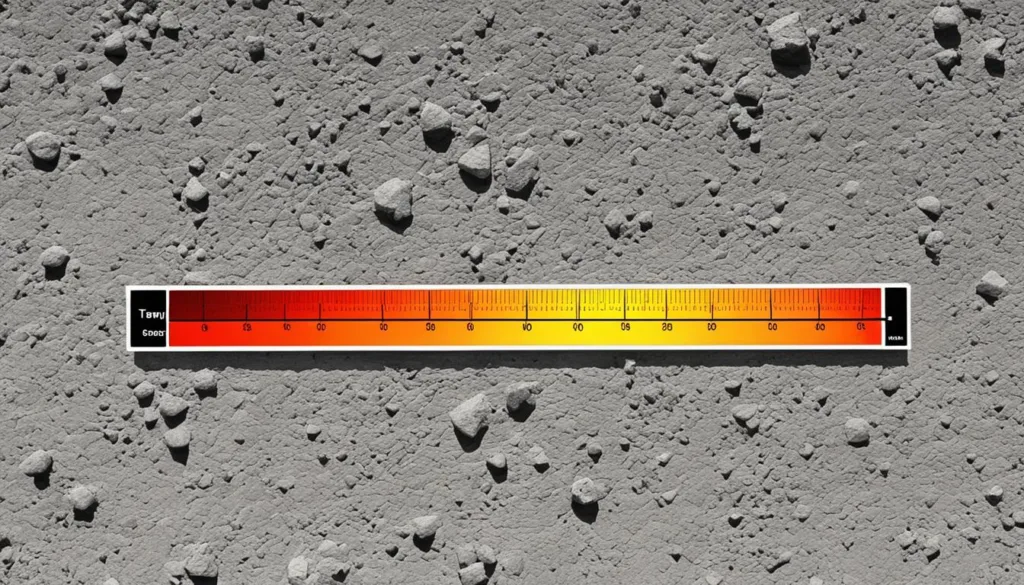

“Improper concrete mix design, poor curing conditions, and harsh environmental exposure can all impact the creep behavior of concrete. Engineers must consider these additional factors when designing and constructing concrete structures.”
Effects of Creep in Concrete
Creep is a phenomenon that can have significant implications on the performance of concrete structures. Over time, the sustained load applied to a concrete structure can cause it to deform and flow, resulting in increased deflection and decreased load-carrying capacity.
Moreover, the long-term effects of creep can cause structural damage, compromising the stability and safety of the building. This can ultimately lead to expensive repair and maintenance costs or even failure of the structure.
It is essential to consider the effects of creep when designing and constructing concrete buildings, to ensure that they are durable and safe for their intended use.
Examples of Effects of Creep
| Effect | Description |
|---|---|
| Increased deflection | Creep can cause the concrete to gradually deflect over time, resulting in an uneven surface and affecting the performance of the structure. |
| Decreased load-carrying capacity | The deformation caused by creep can reduce the load-carrying capacity of the concrete structure, leading to potential safety hazards. |
| Structural damage | Over time, the effects of creep can cause damage to the concrete structure, compromising its stability and putting occupants at risk. |
“Creep is a critical consideration in the design and construction of concrete structures. Failure to account for its effects can result in significant safety hazards and expensive repairs.”
Therefore, it is essential to carefully consider the effects of creep, along with other factors such as the water-cement ratio and age of concrete, when undertaking construction projects involving concrete structures.
Conclusion
Understanding the creep behavior of concrete is a crucial aspect of construction, and it’s essential to take measures to mitigate its effects. By considering factors such as the water-cement ratio, humidity, age of concrete, aggregates, and admixtures, engineers can make informed decisions to ensure the long-term durability and performance of concrete structures.
Creep in concrete can lead to significant implications, such as increased deflection, decreased load-carrying capacity, and potential long-term structural damage. Therefore, it’s vital to keep the creep behavior of concrete in mind during the design and construction phases of projects.
Ultimately, the key to successfully managing the creep of concrete is to be proactive and take appropriate measures to minimize its effects. By doing so, engineers can ensure that concrete structures remain safe, reliable, and durable for years to come.
Overall, the importance of understanding creep behavior in concrete cannot be overstated. It’s a crucial aspect of structural design, and by taking steps to address it, engineers can help ensure the long-term viability and safety of concrete structures in every application.
So, whether you’re working on a small-scale building or a large-scale infrastructure project, it’s critical to keep the creep of concrete in mind and take steps to mitigate its effects. Doing so will help to ensure the quality and safety of your structures, making them more reliable and durable in the long run.
Thanks For the Great Attention!
Good Bye & Take Care
Happy Learning
Also, Read,
1000sqft House Plinth Beam Cost
1500Sqft House Construction Cost In 2024
1000sqft house construction cost in 2024

